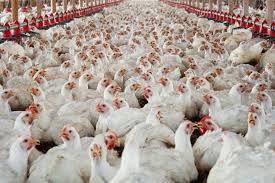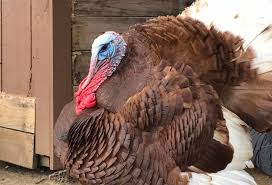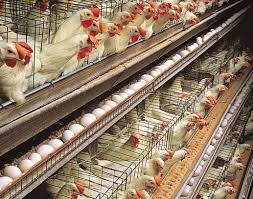Poultry refers to domesticated birds that are raised for their meat, eggs, feathers, and other products. Understanding the different types of poultry is essential for anyone interested in poultry farming or the poultry industry. The primary types of poultry include chickens, ducks, turkeys, geese, and guinea fowl, each offering unique benefits and characteristics.
Chickens are the most common type of poultry, widely raised for their meat and eggs. They come in various breeds, each with distinct features, such as size, color, and egg production capabilities. Broilers are specifically bred for meat production, while layers are raised for egg production.
Chickens are relatively easy to care for and adaptable to different environments, making them a popular choice for both small-scale and commercial poultry operations.
Ducks are another popular type of poultry, known for their rich, flavorful meat and eggs. They are often raised for both purposes, but their needs differ from chickens.
Ducks require access to water for swimming, which aids their natural foraging behavior. They are generally hardier than chickens and can thrive in a variety of climates. Some common breeds of ducks include the Pekin, Khaki Campbell, and Muscovy.
Turkeys are primarily raised for their meat, especially during holiday seasons like Thanksgiving. They are larger birds, and like chickens, they come in various breeds, including the Broad Breasted White and the Heritage breeds.
Turkeys are known for their social behavior and typically require more space than chickens. Proper care and management are essential for maintaining their health and productivity.
Geese are larger than ducks and are often raised for their meat, feathers, and down. They are also known for their ability to control weeds and grass, making them beneficial for pasture management.
Geese are highly social animals and should ideally be kept in groups. Some common breeds include the Embden, Toulouse, and Chinese geese. They have a distinct honking vocalization, which can be both a benefit and a nuisance, depending on the farming situation.
Guinea fowl are less common than other types of poultry but offer unique advantages. Known for their pest control capabilities, they are excellent foragers and can help manage insects and ticks in gardens and farms.
Guinea fowl are also raised for their meat and eggs, which are smaller than chicken eggs but have a distinct flavor. They can be more challenging to manage due to their flighty nature, so proper handling and care are essential for successful raising.
Chickens: The Most Common Poultry

1. Popular Breeds: Chickens are the most widely raised poultry species globally, with various breeds suited for meat or egg production. Common egg-laying breeds include the White Leghorn, Rhode Island Red, and Sussex, while popular meat breeds include the Broilers and Cornish Cross.
2. Egg Production: Hens typically begin laying eggs at around five to six months of age. A good layer can produce 250 to 300 eggs per year. Factors such as breed, nutrition, and environmental conditions significantly influence egg production.
3. Meat Production: Broilers are specifically bred for meat production, reaching market weight in six to eight weeks. They are known for their rapid growth and high feed efficiency, making them ideal for commercial poultry operations.
4. Dual-Purpose Breeds: Some breeds, like the Orpington and Plymouth Rock, are considered dual-purpose as they are good for both meat and egg production. These breeds are ideal for small-scale farmers who want versatility in their flock.
5. Behavioral Traits: Chickens are social animals that thrive in flocks. They exhibit various behaviors, including pecking, scratching, and dust bathing. Understanding their social structure and needs is essential for proper management.
Ducks: Varieties and Characteristics
1. Common Breeds: Ducks come in numerous breeds, each with unique characteristics. Popular egg-laying breeds include the Khaki Campbell and Indian Runner, while the Pekin is well-known for meat production.
2. Egg Production: Duck eggs are larger and richer than chicken eggs, often favored by bakers. Ducks typically begin laying eggs around five to six months of age and can produce 100 to 300 eggs per year, depending on the breed.
3. Meat Production: Pekin ducks are among the most popular for meat production, known for their tender and flavorful meat. They grow quickly and are usually ready for market in about seven to eight weeks.
4. Unique Behavior: Ducks are more water-oriented than chickens and enjoy swimming and dabbling. They are generally quieter and can be easier to manage in free-range systems. Their social nature helps reduce stress in a flock.
5. Foraging Abilities: Ducks are excellent foragers and can help control pests in gardens and fields. Their ability to graze on grass and insects makes them beneficial for integrated farming systems.
Read Also: What are the Differences Between Broccoli and Cauliflower?
Turkeys: Types and Breeds

1. Breeds for Meat Production: Turkeys are primarily raised for meat, with two main types: Broad Breasted White and Heritage breeds. Broad Breasted Whites are favored for commercial production due to their size and rapid growth, while Heritage breeds like Bourbon Red and Narragansett are known for their flavor and traditional farming practices.
2. Growth Rates: Turkeys grow at different rates depending on the breed. Broad Breasted Whites can reach market weight in about 14 to 20 weeks, while Heritage breeds may take longer but offer more robust flavor profiles.
3. Egg Production: While not commonly raised for eggs, female turkeys (hens) can lay approximately 100 to 150 eggs per year. The eggs are larger than chicken eggs but have a lower production rate.
4. Behavior and Social Structure: Turkeys are social birds that exhibit complex social behaviors. They often establish a pecking order within their flock, similar to chickens. Providing adequate space and social interaction is crucial for their well-being.
5. Adaptability: Turkeys are adaptable birds that can thrive in various environments, from small backyards to large commercial farms. They require proper shelter, nutrition, and management practices to ensure healthy growth.
Geese: Overview and Uses
1. Common Breeds: Geese are large waterfowl known for their distinctive honking and strong maternal instincts. Common breeds include the Embden, Toulouse, and Chinese geese, each with specific traits and purposes.
2. Meat Production: Geese are primarily raised for their meat, which is flavorful and fatty. They reach market weight in about 10 to 12 weeks, making them suitable for both small-scale and commercial operations.
3. Egg Production: Goose eggs are larger than chicken eggs and have a richer flavor. While not typically produced in high quantities, certain breeds can lay around 20 to 50 eggs per year, making them a specialty product.
4. Down and Feathers: Geese produce high-quality down and feathers, which are used in insulation products and bedding. The down is valued for its warmth and lightweight properties, making geese beneficial for the textile industry.
5. Pest Control: Geese are natural foragers and can help control weeds and pests in fields and gardens. Their grazing habits promote pasture health and can reduce the need for chemical herbicides.
Quail: Small but Valuable Poultry
1. Popular Breeds: Quail are small game birds that are easy to manage. Common breeds include the Coturnix quail, Bobwhite quail, and the California quail. They are known for their rapid growth and prolific egg-laying.
2. Egg Production: Quail are excellent egg layers, with females capable of producing up to 300 eggs per year. Their eggs are small, flavorful, and highly sought after for gourmet cooking.
3. Meat Production: Quail meat is tender and lean, making it a delicacy in many cuisines. They can be harvested for meat in just six to eight weeks, providing a quick return on investment for farmers.
4. Space Efficiency: Quail require less space compared to larger poultry species. This makes them suitable for small farms or urban environments, allowing for more sustainable farming practices.
5. Educational and Hobbyist Appeal: Quail are popular among hobbyists and educators due to their small size and rapid growth. They serve as excellent subjects for teaching about animal husbandry and genetics.
Guinea Fowl: Unique Traits and Benefits
1. Distinctive Features: Guinea fowl are known for their unique appearance, characterized by a spotted plumage and distinctive helmet-like crown. The most common species raised for meat is the Helmeted Guinea Fowl.
2. Meat Production: Guinea fowl are valued for their lean and flavorful meat, which is often described as tasting similar to game birds. They typically reach market weight in 12 to 16 weeks.
3. Pest Control: Guinea fowl are natural foragers and are effective at controlling pests such as ticks and insects. Their foraging behavior makes them beneficial for maintaining pasture health and reducing the need for pesticides.
4. Protective Nature: Guinea fowl are known for their alertness and protective instincts. They are excellent watchdogs, often sounding alarms when predators are nearby, thus protecting other livestock.
5. Low Maintenance: Guinea fowl are hardy birds that can thrive in various environments with minimal care. They are resilient to many diseases, making them easier to manage for beginners.
Pigeons: Domestication and Breeds
1. Common Breeds: Pigeons, particularly domesticated varieties like the Racing Homing Pigeon, King Pigeon, and Fantail Pigeon, are raised for various purposes, including sport, meat, and companionship.
2. Racing and Sport: Racing homing pigeons are trained to fly long distances and return home. This sport has a rich history and continues to be popular among enthusiasts worldwide.
3. Meat Production: Certain pigeon breeds, such as the King Pigeon, are raised for meat. Pigeon meat, also known as squab, is considered a delicacy and is tender and flavorful.
4. Companion Animals: Pigeons are popular as pets due to their friendly nature and ability to form strong bonds with humans. They are relatively easy to care for, making them suitable for families and urban dwellers.
5. Breeding and Genetics: Pigeons are known for their diversity in color and feather patterns. Breeders often select for specific traits, leading to a wide variety of unique breeds and hybrids
Read Also: Bovine Spongiform Encephalopathy: Description, Damages Caused, Control and Preventive Measures
Peafowl: Beauty and Utility

1. Overview of Peafowl: Peafowl, particularly the Indian Peafowl (Pavo cristatus), are renowned for their stunning plumage and vibrant colors. The males, known as peacocks, display their magnificent tail feathers during courtship, making them popular in ornamental and decorative farming.
2. Ornamental Value: Peafowl are often kept for their beauty, adding aesthetic value to gardens and landscapes. Their striking appearance makes them a popular choice for parks, estates, and private gardens.
3. Egg Production: Female peafowl, called peahens, lay around 4 to 8 eggs per year. While not as prolific as chickens, their eggs are larger and have a unique flavor, making them a niche product in specialty markets.
4. Pest Control: Peafowl are natural foragers, feeding on insects, rodents, and small reptiles. Their foraging behavior helps control pest populations, making them beneficial for maintaining garden health.
5. Cultural Significance: In many cultures, peafowl symbolize beauty, grace, and prosperity. They hold significance in various traditions and are often featured in art and literature, enhancing their value beyond just farming.
Exotic Poultry Breeds
1. Unique Characteristics: Exotic poultry breeds are often distinguished by their unusual colors, sizes, and characteristics. Breeds such as the Silkie, Ayam Cemani, and Polish are known for their striking appearances and unique traits.
2. Specialty Markets: Exotic poultry breeds are increasingly popular in specialty markets, appealing to hobbyists and chefs looking for unique ingredients. Their distinct flavors and unique egg colors can enhance culinary experiences.
3. Heritage and Conservation: Many exotic breeds are heritage varieties, often facing threats of extinction. Raising these breeds contributes to biodiversity and helps preserve unique genetic traits.
4. Temperament and Behavior: Exotic breeds often have specific temperaments that can differ significantly from standard poultry. Understanding these behaviors is essential for effective management and care.
5. Educational Opportunities: Keeping exotic poultry provides educational opportunities for farmers and enthusiasts alike. They serve as valuable subjects for studies on genetics, breeding, and animal husbandry practices.
Nutritional Benefits of Poultry
1. High-Quality Protein: Poultry meat is an excellent source of high-quality protein, essential for muscle growth and repair. Chicken, turkey, and duck meat provide a lean source of protein that is easily digestible.
2. Nutrient-Rich Eggs: Poultry eggs, especially from chickens and ducks, are nutrient-dense, containing essential vitamins and minerals such as vitamin B12, vitamin D, selenium, and choline. They are a versatile ingredient in various dishes.
3. Healthy Fats: Poultry, particularly duck and goose, contains healthy fats that can provide essential fatty acids. These fats contribute to heart health when consumed in moderation and as part of a balanced diet.
4. Versatile Cooking Options: Poultry is incredibly versatile in the kitchen, allowing for various cooking methods and recipes. From roasting to grilling to frying, poultry can be adapted to suit many cuisines and preferences.
5. Role in Sustainable Farming: Poultry farming can be an environmentally sustainable practice when managed properly. Birds can be integrated into crop rotations and utilized for pest control, contributing to a more sustainable agricultural system.
Do you have any questions, suggestions, or contributions? If so, please feel free to use the comment box below to share your thoughts. We also encourage you to kindly share this information with others who might benefit from it. Since we can’t reach everyone at once, we truly appreciate your help in spreading the word. Thank you so much for your support and for sharing!
Read Also: How to Control Pests in the Garden
Frequently Asked Questions
We will update this section soon.

